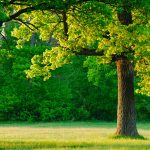History of the U.S. National Cherry Blossom Festival
Every year when Winter comes to an end, residents of the Northwest bask in short glimpses of sunlight and stop traffic at the first signs of Spring. One of the most breathtaking indications of the new season are the pink and white blossoms of cherry trees, an historic Japanese symbol of rebirth, and also mortality since the blossoms are so quick to fall. The many varieties of the Japanese cherry tree can be found all throughout Portland, but they are certainly not indnigenous. These beautiful trees first came to the U.S. more than 100 years ago.
In 1906, an official of the U.S. Department of Agriculture by the name of Dr. David Fairchild imported 100 cherry trees from a nursery in Japan to plant on his property in Maryland and test their hardiness. Pleased with the trees’ success, Fairchild began to promote the idea of planting the trees along streets around Washington.
In attendance of Fairchild’s Arbor Day lecture in 1908 was Mrs. Eliza Scidmore, who had been lobbying to plant cherry trees along the reclaimed Potomac waterfront for 20 years to no avail. The next year, Scidmore wrote a letter to the First Lady, Helen Taft, outlining her plan to buy the trees she wanted and donate them to the city. Delighted by the idea, Mrs. Taft put the plan into motion herself. A Japanese Chemist in Washington at the time heard of this and generously donated 2,000 trees to fill out the area along the Potomac river bank in the name of Tokyo.
Unfortunately, when the trees arrived in D.C. in January of 1910 they were discovered to be infested with insects and disease and were burned to protect American growers. The American government sent the Japanese an apologetic letter, and they replied with another shipment of 3,020 cherry trees comprised of twelve different varieties.
On March 27th, 1912, Helen Taft and the Viscountess Chinda, wife of the Japanese Ambassador planted two of the cherry trees on the bank of the Tidal Basin (just south of what is currently Independence Ave.), and the first lady offered the Viscountess a bouquet of roses. Washington D.C.’s National Cherry Blossom Festival grew from this small ceremony, witnessed by only a few people. For the next several years, workers continued planting cherry trees around the Tidal Basin. The two original trees still stand near the John Paul Jones Memorial.
Throughout the following decades, even during WWII, the National Cherry Blossom Festival became more and more prominent and grew into an annual event.
In 1965, Japan donated another 3,800 cherry trees to another first lady devoted to beautifying Washington, Lady Bird Johnson. She and Mrs. Ryuji Takeuchi, wife of Japan’s Ambassador re-enacted the 1912 planting ceremony.
In 2011, around 120 specimens from the surviving 1912 trees around the Tidal Basin were collected and sent back to Tokyo to retain the genetic lineage. Several other such exchanges and gifts over the past 50 years have benefited both cities. Through this tradition of giving, the cherry trees have been realized as a symbol and agent of friendship.
Last year, D.C.’s festival extended from 16 days to five weeks in a grand tribute to the 100-year anniversary of the original gift of trees. This year, more than 1.5 million people will visit Washington, DC to admire the cherry blossoms and participate in the cultural programming that celebrates the beginning of spring.
Here in Portland we have our own festival called Sakura Sunday presented by the Japan-America Society of Oregon. The 3rd annual festival will take place on the afternoon of April 7. You can join in celebrating the blossoming cherry trees along Portland’s waterfront, and the friendship between the United States and Japan, with a picnic in the park. For more info, visit their Facebook event page.
If you are lucky enough to have a Japanese cherry tree on your property and you’d like some help to keep it healthy and beautiful, contact Inexpensive Tree Care today.



